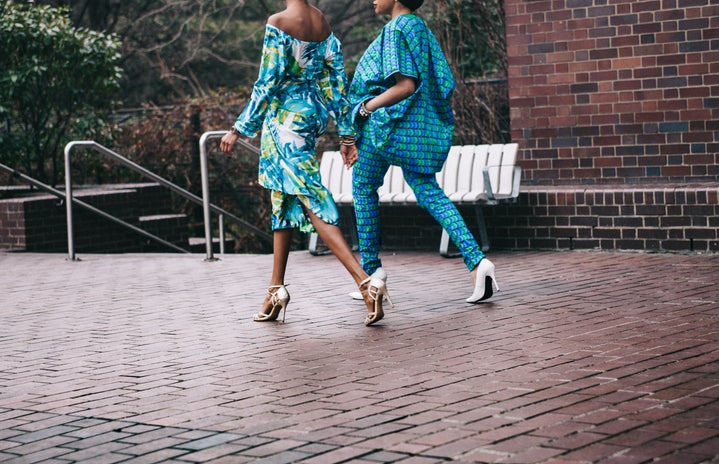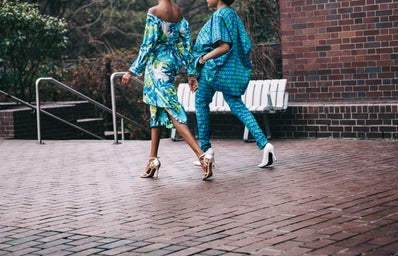Thrifting is awesome. It is environmentally conscious, insanely affordable, and totally trendy. With more than a year of cumulative experience working at two different thrift stores during high school, I consider myself pretty knowledgeable when it comes to secondhand shopping. In this article, I’ll lay out my top tips for finding deals at thrift stores as well as what I think is worth buying and what you should skip out on during your next thrifting adventure.
I’ll start with tips, because those are useful no matter what you’re out shopping for.
- Ask the employees about which days are 50% off. Some thrift stores have entire months where a certain color tag is half off, while some change their sales weekly. They may not be able to tell you which color will be on sale next, but they can let you know when the sale runs until.
- August 17th is National Thrifting Day. Many thrift stores have special sales to celebrate this – for example, the store that I worked at marked the entire store at 50% off for the day.
- Check the original stickers on items at the thrift store – if an item has a sticker that says “Greenbrier International” on it, it’s from the dollar tree. The item may not be worth the price the employees put on it.
- Prices are pre-set at thrift stores, and in general, many people are working to price items, so they may be priced incorrectly or slightly differently. If a price doesn’t seem right to you, or you find something similar that is priced differently – ask! It never hurts to get a second opinion.
When thrift shopping, there are several items totally worth searching for, and some that I’d recommend buying new, checking the Dollar Tree for, or just avoiding altogether. Here are a few of my green-light items at the thrift shop:
- Professional Clothing: In my experience, business clothing is not heavily worn before it is donated, and there are typically quality brands such as Ann Taylor, Ralph Lauren, and Lauren Conrad are donated on a relatively regular basis. Dresses and blazers in particular are the best – I’d estimate about 25% of dresses that came into my work still had the tags on them!
- Baby or Children’s Clothing: Babies grow fast, and people love to buy baby clothes to give to mother’s at baby showers, resulting in tons of gently used and even brand-new baby clothes being donated to thrift stores. The amount of children’s clothes that came through the back at my work was unbelievable, and we sold the majority of it for a dollar or two.
- Winter Coats/Jackets: Coats and jackets typically last a long time, but they’re also expensive. A thrift store is a great place to shop around for a new jacket – they typically cost about $12-$15 at secondhand shops, and many of them are only gently used.
- Books, Games & Puzzles: These items can be expensive new, and they are donated all the time to thrift stores. Although it can sometimes be a gamble considering most thrift stores don’t check to see if all of the parts and pieces are there in games or puzzles, you can usually depend on being able to score a popular game or a best-seller novel for a fraction of its original price.
- Sports Bras & Swimwear: I scored two brand new sports bras from my thrift store job last summer – one from Aerie, and one from Under Armour. Although not all of them will be in good shape, sports bras typically last a long time and rock even if they’re used. Swimsuits too! There were tons of cute two-pieces from Target, Forever 21, Aerie, Zaful, and other brands available at my store for really cheap.
Although thrift stores are a great place to search around for clothing and odds-and-ends items, there are a few things I think most thrifters should steer clear of.
- Tupperware: Sometimes you can find the occasional plastic bowl that’s marked for a dollar, but most used Tupperware at thrift stores, in my experience, is overpriced. I would suggest checking the dollar tree – there, you’ll find brand new plastic food containers for cheaper than at the thrift store.
- Pajamas: Some PJs can be alright, but most of the pajamas that we sold at my store went untouched because pajama pants don’t last long after they’re used. They pill easily and look super worn even if they’ve only been washed a few times.
- Fake Flowers: Again, these are often overpriced in comparison to the Dollar Store. Even if you do get them for 50 cents, they’re used, sometimes dusty, and for an extra two quarters you could get brand new fake flowers that look much better.
- Beauty Products: Even if the beauty products at the thrift store look unopened, often they’re past their expiration dates or just not trustworthy. Most beauty products aren’t cleaned before they’re placed on the shelves, and I’d recommend saving your skin by just splurging a little more on new products you can really trust.
- Bath Towels: Towels are typically sold for around $2.99, which is not much less than they cost brand-new at Walmart. I don’t know about you, but I prefer a bath towel that is fluffy and comfortable rather than a flat, used one. I’d spend the extra dollar or two on a newer towel if you can.
Overall, thrift shopping is all about you! It’s a great way to find unique clothing and décor that is affordable and benefits the environment. My tips come from my personal experience sorting, pricing, and selling donated items for over a year at two different locations, but in the end, if you love something at the thrift store, buy it! There are no rules when it comes to thrifting, but hopefully these tips can help you save some money on your next secondhand shopping trip.



